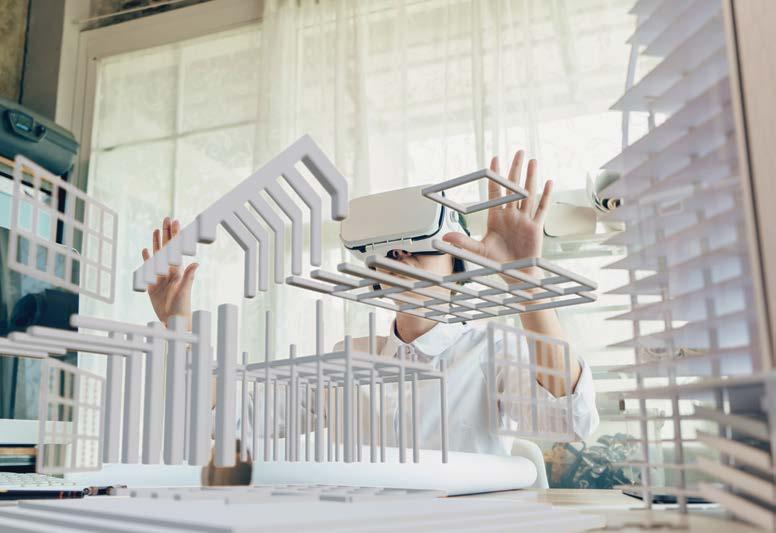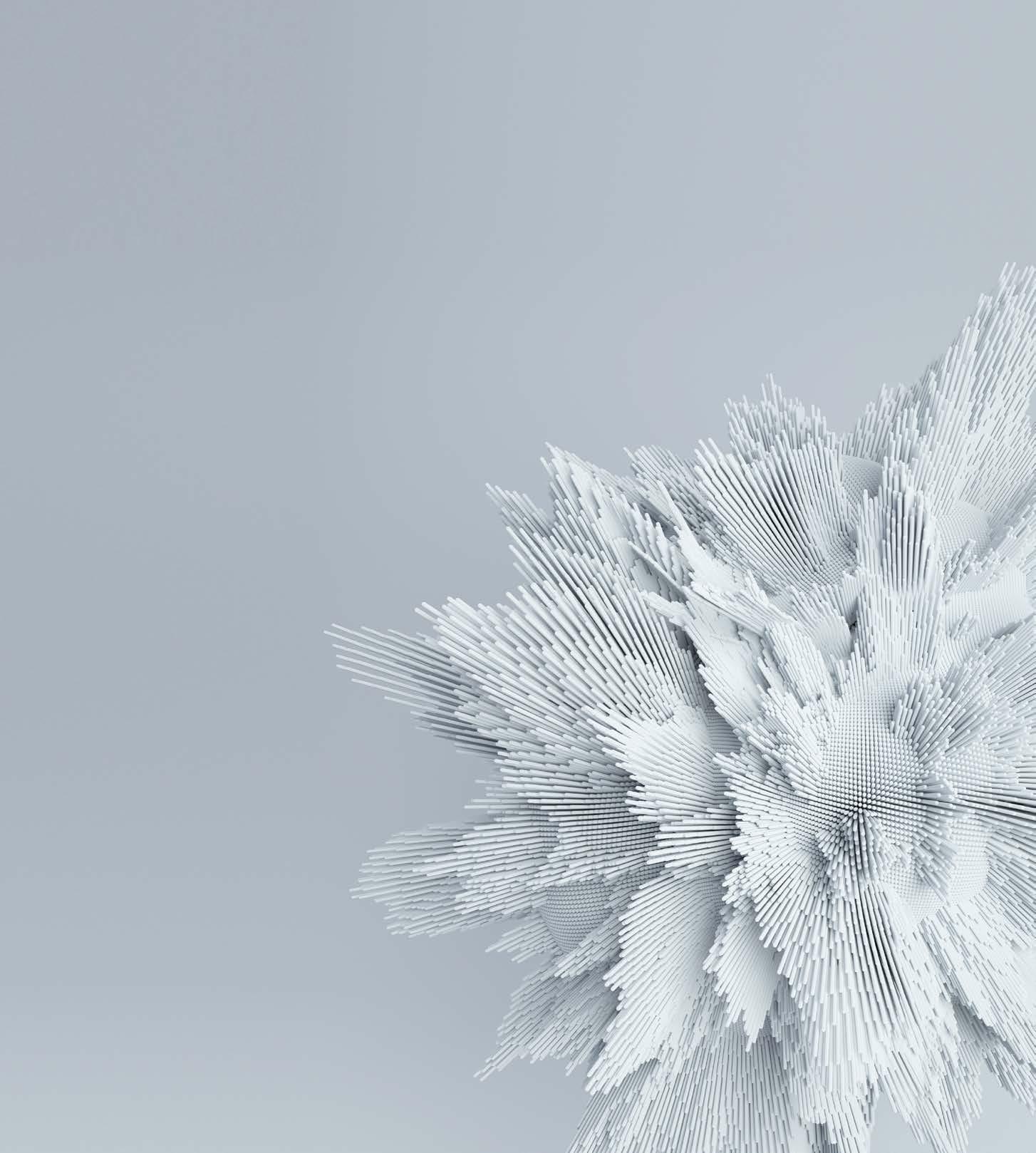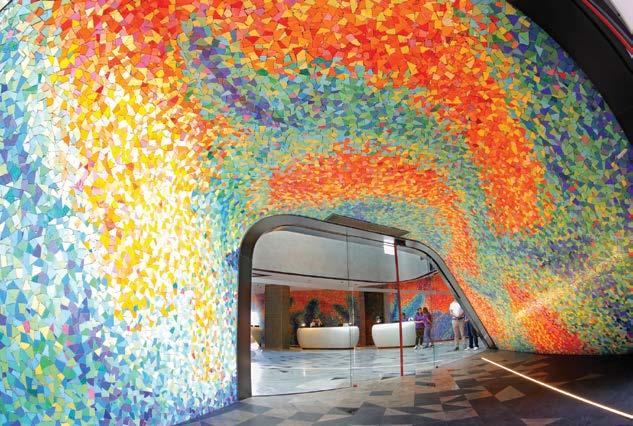
8 minute read
Trendsetter
What are Trend Group's core competencies? What sets you apart from the competition?
TREND Group is not a company, but rather a journey that includes our founder's experience as well as the creativity of our designers, who turn any design intent into reality. With the most important and strong research and development (R&D) capabilitises, our
100% in-house production is the foundation of our success.
Another of our key strengths is our ability to deliver bespoke patterns with high quality and on time, meeting our clients' specific needs. We also take pride in our ability to tailor our services to specific needs, making us stand out in the market.
In addition, it is also worth noting that our well-established network and commitment to honesty and transparency play a big role in our success.
How has the company changed over time in response to changing demands?
As much as we believe that the trends are always changing, our core specialty remains constant, and we continue to preserve and uphold the uniqueness of historical techniques. However, we embrace innovation and are flexible to adapt to the partner’s taste in our R&D activity, by achieving the design intent in a dynamic translation using our products.
You're venturing into the Dubai market. Is there a specific reason why this location was chosen?
Dubai was chosen as a strategic location for TREND Group's expansion due to its unique and unparalleled market potential. As a hub and gateway to the world, Dubai offers endless opportunities and a dynamic business environment that aligns with our vision and values.
How is 3D printing and technology changing the way you envision and deliver your projects?
3D printing helps our technical and R&D departments and has made the process more efficient because we can get a 1:1 scale of the target product in a day.
Furthermore, delivering dynamic surfaces has always been a difficult task, but with recent technological advancements, it has become more affordable, efficient, and faster to produce challenging projects such as curved domes that require material customisation.
What are the most recent offerings that you highly recommend at the moment? Also, what material do you prefer?
At TREND Group, we highly recommend our Terrazzo slabs which are an eco-friendly product, being made of 78% recycled resources, and treated with an antimicrobial agent that inhibits the growth of microbes. This product aligns with our eco-philosophy of protecting our planet and its resources while providing a durable and beautiful surface.
As for my personal preference, I am particularly drawn to the unique offerings from Orsoni materials. Orsoni is a historical Venetian furnace that uses the same techniques since 1888 to produce 24 k gold leaf mosaic, coloured gold, and Venetian smalti in more than 3,500 colours. >>>
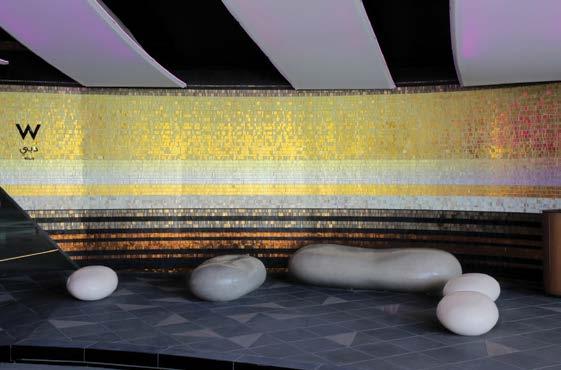
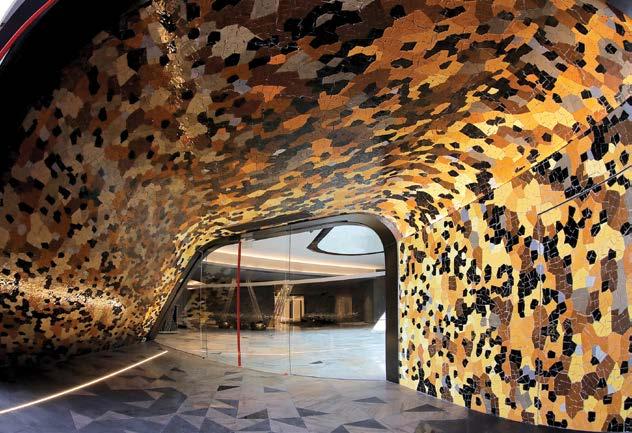
What are the exciting projects you are doing?
There are a lot of masterplans released at the moment, which got us to be very busy on several exciting projects across the region. In Saudi Arabia, we are supplying materials to multiple projects in the Red Sea, as well as various hospitality projects in Riyadh and Jeddah.
In the UAE, we are proud to be a part of some truly exceptional projects with reputable clients such as EMAAR, Marsa Al Arab, Anantara RAK, Tilal Al Ghaf, and MAG city among others. Not to forget about Egypt’s master plans, where we were able to secure some interesting projects as well.
What have been the most fulfilling projects you have worked on and why?
One of the most fulfilling projects we have worked on is the W Hotel Palm. We were involved in the project from scratch, starting with inspiration from the project designer, and luckily we were able to perfectly translate the inspiration into reality. Leaving the project with a very positive impression, it holds a special place in our hearts, and every time we visit, it feels great and takes us back to the development days, which were split between Venice and Dubai.
How do you incorporate Arab influences and heritage into your work?
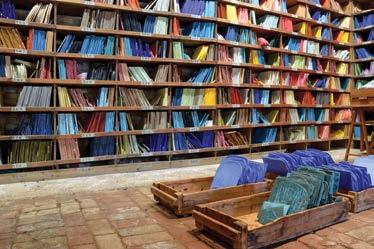
One way we incorporate Arab influences into design work is through the use of traditional Arab art and calligraphy. Arab art is known for its intricate patterns, vibrant colours, and use of geometric shapes, which can be incorporated into various design elements such as logos, graphics, and textiles.
Another way we incorporate Arab heritage into design work is through the use of Arab motifs and symbols. These can include the Arabic script, and the use of patterns such as the arabesque, mashrabiya which are all related to Arab heritage.
Additionally, Arab heritage can be incorporated into design work through the use of traditional Arab architecture, which is characterised by its use of geometric shapes, intricate patterns, and the incorporation of natural elements such as water and plants. This can inspire the design of buildings, interiors, and even furniture. Finally, it is important to consider the cultural and social context when incorporating Arab influences into design work. This involves understanding the historical and cultural significance of the design elements used and ensuring that they are used in a respectful and appropriate manner.
What are the sectors you want to explore?
We would like to explore the Yacht and healthcare segments.
Where do you see the future taking you, especially with regard to both general design and the direction of Trend Group?
One trend that is likely to continue is the increased use of technology in the production of glass mosaics and Original slabs. This includes the use of digital design tools, laser cutting and engraving, and advanced glass printing technologies. These innovations allow for more precise and intricate designs, as well as greater customisation and personalisation options for customers.
Moreover, emphasising environmentally responsible practices throughout our production processes is our focus on sustainability and social responsibility. This will require a more holistic approach to design that considers the entire lifecycle of a product or service, from its initial conception through its eventual disposal.
Additionally, there may be an increased emphasis on the artistic and creative aspects of glass mosaic design. This could involve greater use of unique and unconventional materials, as well as an exploration of new forms and shapes beyond the traditional square and rectangular mosaic tiles. As glass mosaics and terrazzo become more versatile and accessible, they may become an increasingly popular choice for adding color, texture, and visual interest to a wide range of spaces and projects.
Overall, I expect that the future of design will be characterised by greater collaboration between designers, engineers, and other stakeholders, as well as a deeper understanding of the needs and preferences of users and the broader social and environmental context in which products and services are created and consumed.

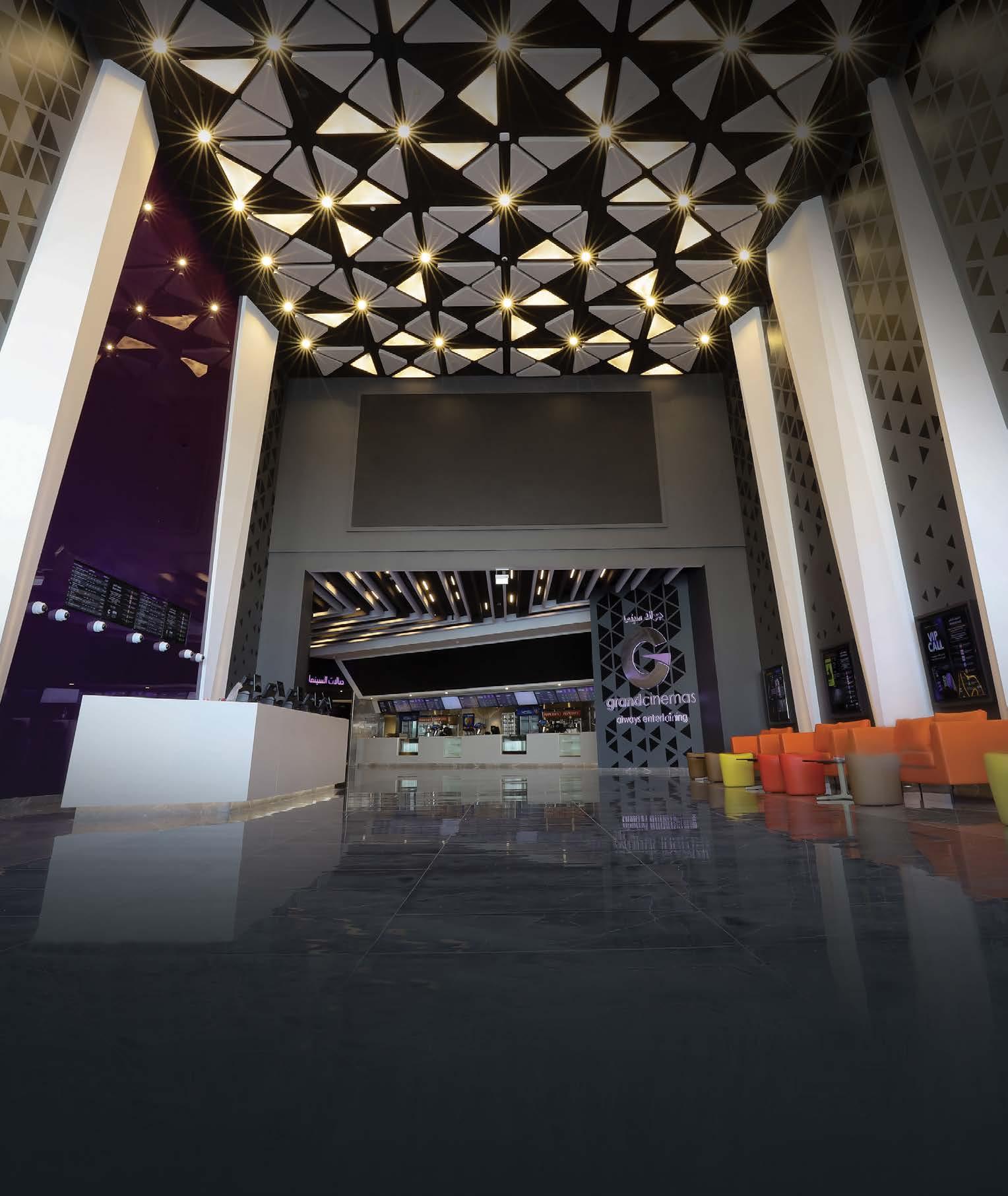
HORTON INTERIORS managing director Douglas Drummond discusses how the interior design industry is eagerly embracing artificial intelligence
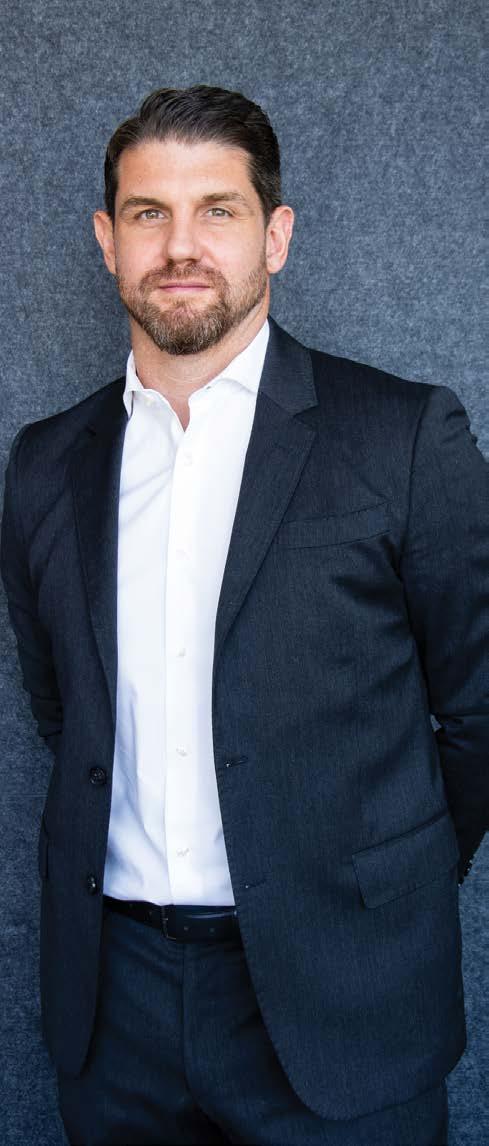
The rise of artificial intelligence (AI) has been rapid over recent years, with different sectors finding new ways to harness its power. Commercial interior design is one such industry that has embraced this new technology with open arms. Designers are already using it in numerous ways, and with the sector's rapid growth, we can expect to see even more innovative methods emerge soon. If AI isn’t part of your current setup, it should be, especially to enhance the creative process during the early stages.
How is it being used?
When it’s incorporated into workflows, AI has the potential to revolutionise the experience for clients and design firms alike. By being able to process lots of data at once, AI can streamline a lot of the time-consuming tasks that often cause delays. Take Space Planner AI, for example. This type of technology was initially developed for the master planning of large-scale urban and suburban areas. However, we expect it or similar software to be increasingly used for generating commercial space plans. It would help architects and interior designers optimise the use of a space and create efficient, functional work environments by analysing factors such as lighting, ventilation, noise levels, and occupancy engagement. Additionally, the software could generate multiple design scenarios to compare and evaluate, enabling designers to make data-driven decisions about their layouts. Digging a little deeper, we’re also seeing an increase in AI that can generate intricate design visualisations concepts. Morpholio has disrupted the industry, catching the attention of the mainstream media thanks to its genius ability to read mood boards and other user data, then provide visuals to match. Based on a single image, it can identify the dominant colour and then recommend textures, colours and patterns to complement the space. As Morpholio contains machine-learned tech, it will eventually understand the user’s preferences over time.
Midjourney can take concept visuals to the next stage and create highly detailed images and immersive 3D visualisations. It doesn’t even need an image to work with - you can simply type in your request and it will generate options. Users can then tweak the images and renders until they fit a certain brief for a client. There’s no need for expensive 3D-rendering software and hours spent manually honing each image, which can be unnecessary in the initial concept phase.
Digging a little deeper, we’re also seeing an increase in AI that can generate intricate design visualisations concepts. Morpholio has disrupted the industry, catching the attention of the mainstream media thanks to its genius ability to read mood boards and other user data, then provide visuals to match.
In short, designers can work smarter, not harder, in the early stages of a project.
The risks of over-reliance
There’s a common misconception that AI will replace human activities in many industries. Although the above examples offer some ground-breaking benefits, they’re only as good as the data they rely on. With this said, interior designers should proceed with caution when it comes to AI as it’s not without its faults.
Firstly, AI can - and does - get things wrong. It’s trained on inputted information, sometimes resulting in errors. Further investigation and research should always be conducted to make sure that due diligence has been applied. After all, it's the interior designer and not the software creator that will be liable for any mistakes. There are constraints in terms of creativity. Algorithms are designed to analyse data and make predictions. While this can be useful for generating initial design options or optimising layouts, AI will not always be able to understand client preferences without proper guidance, nor will it necessarily understand the nuances of context or the cultural and historical significance of spaces. Ultimately, AI is a tool to add value, not a replacement for professional expertise.
It's also worth noting that the costs of AI tools are expected to rise further, pricing out smaller design firms or independents. If you're building an entire business on AI and its price suddenly skyrockets, or the tools you use move to more expensive tiers, you could find yourself in a difficult financial situation.
From an ethical standpoint, we should be aware that AI algorithms may perpetuate existing social and cultural biases in design, and we must work actively to mitigate them.
Getting the balance right AI is here to stay and will become even more ingrained in the industry over time. Rapid concept generation and prototyping with AI can currently significantly increase efficiency. Multiple designs can be created and presented to clients in order for decisions to be made quickly and projects to move forward more quickly. Furthermore, gathering relevant data from a variety of sources, such as previous projects and industry reports, can add value in areas such as sustainability and wellness.
Used correctly, AI has the potential to elevate offerings in the commercial interior design industry. It will never be able to replace the human touch or a designer's keen eye for detail, but it can certainly broaden opportunities, provide a new type of creativity, and provide a more cost-effective service.
